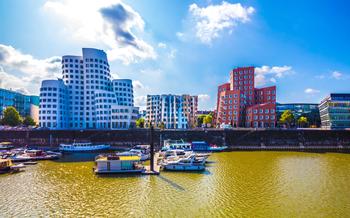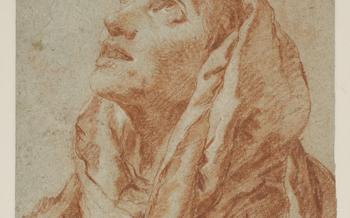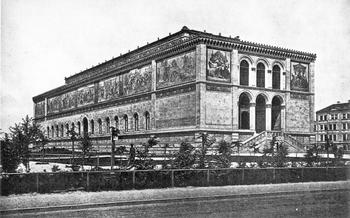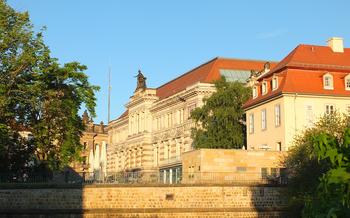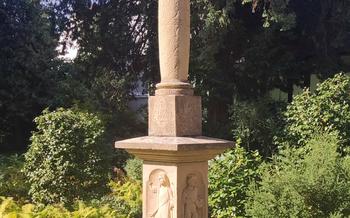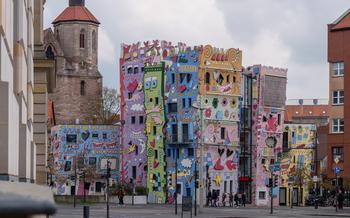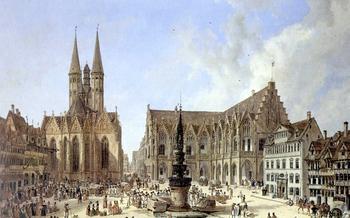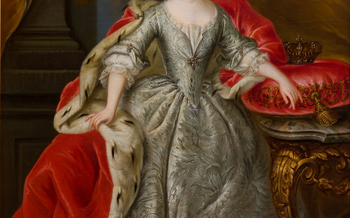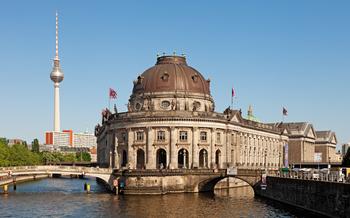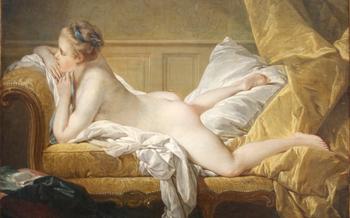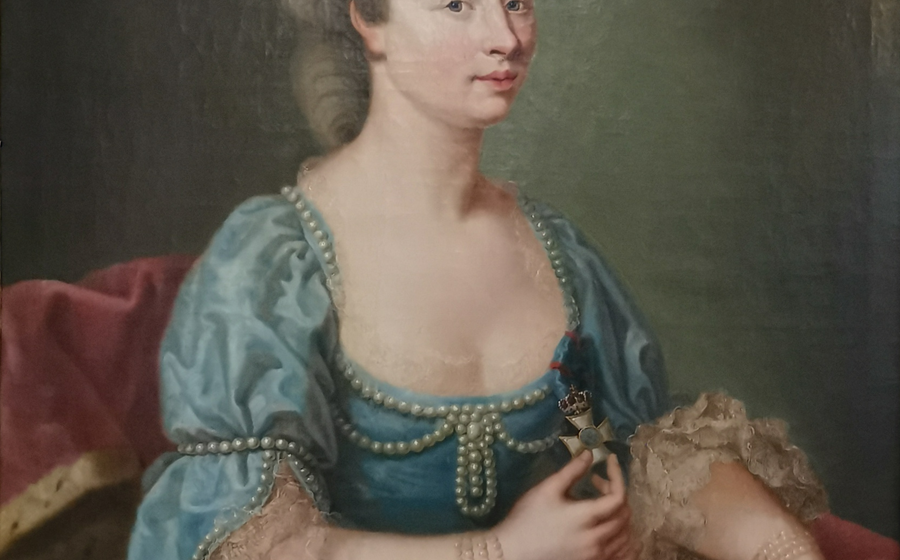
Palatinate Museum
- Navigating the Museum's Exhibits: A Journey Through Time
- Prehistoric Discoveries: Uncovering the Region's Ancient Past
- Roman and Medieval Treasures: Exploring the Legacy of Roman and Medieval Civilizations
- Renaissance and Baroque Masterpieces: Admiring the Exquisite Works of Art from the Renaissance and Baroque Periods
- Modern and Contemporary Expressions: Delving into the Realm of Contemporary Art and Its Diverse Interpretations
- Interactive Displays and Hands-on Experiences
- The Heidelberg School of Romanticism: A Glimpse into Artistic Heritage
- Ancient Egypt and the Middle East: A Journey to Distant Lands
- Special Exhibitions and Temporary Displays
- Guided Tours and Educational Workshops
- Exploring the Museum's Enchanting Garden: A Haven of Tranquility and Beauty
- Family-Friendly Activities and Programs
- Museum Shop: Unique Souvenirs and Treasures
- Dining Options in the Museum: Savor Local Flavors
- Accessibility and Inclusion: Ensuring a Welcoming Environment
- Insider Trip: Hidden Gems of the Collection
Navigating the Museum's Exhibits: A Journey Through Time
The Palatinate Museum in Heidelberg takes visitors on a captivating journey through time, showcasing a diverse range of exhibits that span from prehistoric discoveries to modern and contemporary expressions.
Prehistoric Discoveries: Uncovering the Region's Ancient Past
The museum's prehistoric section houses a fascinating collection of artifacts that shed light on the region's ancient past. From stone tools and weapons to pottery and jewelry, these exhibits provide a glimpse into the lives and cultures of our early ancestors.
Roman and Medieval Treasures: Exploring the Legacy of Roman and Medieval Civilizations
The museum's Roman and medieval collection showcases the rich cultural heritage of the Palatinate region during these periods. Visitors can admire well-preserved Roman sculptures, coins, and mosaics, as well as medieval weaponry, armor, and manuscripts.
Renaissance and Baroque Masterpieces: Admiring the Exquisite Works of Art from the Renaissance and Baroque Periods
The Palatinate Museum boasts an impressive collection of Renaissance and Baroque masterpieces. From paintings by Albrecht Dürer and Hans Holbein the Younger to sculptures by Tilman Riemenschneider and Veit Stoss, these works of art showcase the extraordinary skill and artistry of the era.
Modern and Contemporary Expressions: Delving into the Realm of Contemporary Art and Its Diverse Interpretations
The museum's modern and contemporary art collection features a diverse range of works from the 20th and 21st centuries. Visitors can explore paintings, sculptures, installations, and multimedia works that challenge traditional notions of art and reflect the ever-evolving landscape of contemporary artistic expression.
Interactive Displays and Hands-on Experiences
The Palatinate Museum offers a range of interactive displays and hands-on experiences that bring history to life and make learning fun for visitors of all ages. These interactive elements enhance the museum experience, allowing visitors to engage with the exhibits in a more immersive and memorable way.
One of the highlights is the "Virtual Reality Time Machine", which transports visitors back in time to experience historical events and explore different eras. Through virtual reality headsets, visitors can immerse themselves in the vibrant streets of medieval Heidelberg or witness the grandeur of the Renaissance courts.
The museum also features "Touch and Feel" exhibits that allow visitors to handle replicas of historical artifacts, such as ancient coins, pottery, and tools. This hands-on approach provides a unique opportunity to connect with the past and gain a deeper understanding of the objects on display.
For families with children, the museum offers a variety of "Family-Friendly Activities", including interactive games, puzzles, and scavenger hunts. These activities are designed to engage children in the learning process and make the museum experience more enjoyable and educational for the whole family.
In addition to these interactive displays, the museum also hosts "Educational Programs and Workshops" throughout the year. These programs are led by experienced educators and offer opportunities for visitors to learn more about specific topics, such as archaeology, art history, and the history of the Palatinate region.
The Palatinate Museum's commitment to interactive experiences and educational programming ensures that visitors of all ages can engage with the museum's collection in a meaningful and memorable way.
The Heidelberg School of Romanticism: A Glimpse into Artistic Heritage
The Heidelberg School of Romanticism, a pivotal movement in German art history, flourished in the early 19th century, leaving an indelible mark on the city's cultural identity. The Palatinate Museum proudly showcases a significant collection of artworks by Romantic artists, providing a glimpse into the movement's unique aesthetic and philosophical underpinnings.
Artistic Movement: The Heidelberg School of Romanticism emerged as a reaction to the Enlightenment's emphasis on reason and logic. Romantic artists sought to evoke emotions and explore the spiritual and irrational aspects of human experience. They found inspiration in nature, the past, and the individual imagination, rejecting classical forms and embracing a more subjective and expressive style. The Palatinate Museum's collection features works by renowned Romantic artists such as Caspar David Friedrich, Carl Philipp Fohr, and August Riedel, allowing visitors to delve into the movement's distinctive artistic language.
Romantic Landscapes: One of the defining characteristics of the Heidelberg School of Romanticism is its focus on landscape painting. Romantic artists were captivated by the beauty and grandeur of the natural world, seeing it as a reflection of the divine and a source of spiritual inspiration. The museum's collection boasts breathtaking landscapes depicting the idyllic countryside surrounding Heidelberg, with rolling hills, lush forests, and meandering rivers. These serene and evocative paintings invite viewers to contemplate the sublime and experience a sense of awe and wonder.
Literary and Cultural Connections: The Heidelberg School of Romanticism was closely intertwined with other artistic and intellectual movements of the era. The city of Heidelberg was a hub of literary activity, and many Romantic artists collaborated with writers, poets, and musicians to create interdisciplinary works that explored the interconnectedness of the arts. The Palatinate Museum's collection includes works that illustrate these connections, showcasing the influence of Romantic literature and music on the visual arts.
Contemporary Interpretations: While the Heidelberg School of Romanticism is primarily associated with the early 19th century, its legacy continues to resonate in contemporary art. The Palatinate Museum's collection includes works by modern and contemporary artists who have engaged with the Romantic tradition, reinterpreting its themes and aesthetics in new and innovative ways. These works demonstrate the enduring influence of Romanticism on artistic practice, inviting visitors to explore the continuities and ruptures between past and present.
Ancient Egypt and the Middle East: A Journey to Distant Lands
The Palatinate Museum boasts a fascinating collection of ancient Egyptian and Middle Eastern artifacts, inviting visitors on a journey to distant lands and forgotten civilizations. The Egyptian collection holds a captivating array of mummies, sarcophagi, and hieroglyphic inscriptions, offering a glimpse into the enigmatic world of ancient Egypt. Visitors can marvel at the intricately painted mummy cases and learn about the ancient Egyptian beliefs and practices surrounding death and the afterlife.
The museum's Middle Eastern collection, equally impressive, showcases treasures from ancient civilizations such as Mesopotamia, Persia, and Anatolia. Exquisite pottery, jewelry, and sculptures reveal the rich cultural heritage of these ancient societies. Visitors can admire the intricate cuneiform tablets, remnants of ancient writing systems, and explore the influences and interactions between different civilizations in the region.
Through these collections, the Palatinate Museum provides a window into the diverse cultures and artistic traditions of ancient Egypt and the Middle East, encouraging visitors to delve deeper into the history and legacy of these ancient civilizations.
Special Exhibitions and Temporary Displays
The Palatinate Museum is renowned for its dynamic programming of temporary exhibitions that showcase diverse themes and artistic expressions. These exhibitions provide visitors with the opportunity to explore a wide range of subjects, from ancient civilizations to contemporary art installations. Collaborations with renowned artists and institutions bring fresh perspectives and innovative approaches to the museum's collection.
Interactive installations and immersive experiences engage visitors with cutting-edge technologies, blurring the boundaries between art and technology. Limited-time exhibitions offer a unique chance to witness rare and extraordinary works of art that may not be on permanent display. Don't miss the opportunity to delve into these special exhibitions and discover the ever-changing landscape of the Palatinate Museum's offerings.
Guided Tours and Educational Workshops
Immerse yourself in the rich history and artistic treasures of the Palatinate Museum through guided tours and educational workshops. Knowledgeable docents lead visitors on a journey through the museum's diverse collection, sharing fascinating insights and anecdotes that bring the past to life.
Thematic workshops offer hands-on learning experiences, allowing visitors to delve deeper into specific topics or techniques. Whether you're interested in ancient Egyptian hieroglyphs, Renaissance painting, or modern art installations, there's a workshop designed to cater to your interests.
Art history lectures provide an opportunity to learn from experts in the field, gaining a deeper understanding of the museum's collection and the broader context of art history. These lectures cover a wide range of topics, from the Heidelberg School of Romanticism to contemporary art movements.
Families can also benefit from the museum's educational programs, designed to engage children with history and art in a fun and interactive way. School groups can arrange visits to the museum, where they can participate in tailored programs that align with their curriculum.
Exploring the Museum's Enchanting Garden: A Haven of Tranquility and Beauty
Step outside the walls of the Palatinate Museum and discover its hidden gem: a breathtaking garden that offers solace and inspiration amidst the bustling city. Wander through the lush greenery, past vibrant flower beds, and admire the sculptures and contemporary art installations that dot the landscape. Themed gardens, showcasing specific plant species or historical influences, provide a unique perspective on the museum's collection and the region's rich heritage. Find a secluded spot beneath the shade of towering trees or by the tranquil pond, and let the serenity of the garden wash over you. Reflect on the exhibits you've seen, or simply immerse yourself in the beauty of nature. The museum's garden is an oasis of tranquility, an invitation to pause, breathe, and appreciate the harmony between art and nature.
Family-Friendly Activities and Programs
The Palatinate Museum recognizes the importance of engaging young minds and fostering a love for history and art from an early age. To this end, the museum offers a range of family-friendly activities and programs designed to entertain, educate, and inspire children of all ages.
Children's workshops are a highlight, providing a platform for creativity, exploration, and hands-on learning. These workshops often revolve around specific themes or techniques, allowing children to engage with the museum's collection in a fun and interactive way.
Family tours are another popular option, offering a unique opportunity for families to explore the museum together. These tours are tailored to engage children, using storytelling, interactive activities, and games to bring the museum's exhibits to life.
Activity sheets and scavenger hunts are also available, transforming the museum into a treasure hunt for kids. These materials encourage children to explore the museum's collection independently, promoting observation, curiosity, and a sense of discovery.
Finally, the museum regularly hosts family-friendly exhibitions that cater specifically to the interests and imaginations of young visitors. These exhibitions often feature interactive displays, hands-on activities, and engaging themes that make learning fun and memorable.
Museum Shop: Unique Souvenirs and Treasures
The Museum Shop at the Palatinate Museum is a treasure trove of unique souvenirs and gifts that celebrate the museum's rich collection and the cultural heritage of Heidelberg. Visitors can browse a wide range of items inspired by the museum's exhibits, including replicas of ancient artifacts, fine art prints, and contemporary artworks.
The shop also features a selection of local crafts and artwork, supporting local artisans and showcasing the region's vibrant artistic community. Visitors can find handcrafted pottery, jewelry, and textiles, as well as unique souvenirs made from local materials such as wood, glass, and ceramics.
For those seeking educational materials, the Museum Shop offers a variety of books, guides, and catalogs that delve deeper into the museum's exhibits and themes. Visitors can find publications on art history, archaeology, and the history of the Palatinate region, as well as educational materials for children and families.
The Museum Shop also features limited-edition items and exclusive collaborations with artists and designers, offering visitors the chance to purchase unique and memorable souvenirs. These limited-edition items may include prints, sculptures, or other artworks inspired by the museum's collection or by the work of contemporary artists.
Dining Options in the Museum: Savor Local Flavors
The Palatinate Museum offers a delightful culinary experience to complement its rich cultural offerings. The museum's restaurant, The Palatinate, invites visitors to indulge in the flavors of regional cuisine, showcasing traditional dishes prepared with fresh, local ingredients. From hearty stews and succulent roasts to delicate pastries and homemade desserts, the menu celebrates the culinary heritage of the Palatinate region.
For a lighter meal or a quick bite, the café and tearoom provides a cozy setting to relax and refuel. Visitors can savor a variety of sandwiches, salads, and homemade cakes, accompanied by a refreshing cup of coffee or tea. During warm weather, the outdoor seating on the museum's terrace or in the garden offers a delightful al fresco dining experience, allowing visitors to enjoy the beautiful surroundings while savoring their meal.
The museum's commitment to sustainability extends to its dining options. The restaurant and café prioritize the use of locally sourced ingredients, supporting regional farmers and producers. They also follow environmentally conscious practices, such as reducing food waste and using recyclable materials.
Whether seeking a hearty meal or a light snack, the Palatinate Museum's dining options offer a delightful culinary journey that complements the museum's cultural treasures.
Accessibility and Inclusion: Ensuring a Welcoming Environment
The Palatinate Museum is committed to creating an inclusive and welcoming environment for visitors of all abilities and backgrounds. The museum features wheelchair-accessible ramps, elevators, and designated parking spaces to ensure that everyone can easily navigate the building and its exhibits. Audio guides and descriptive tours are available for visitors with visual impairments, providing detailed descriptions of the artworks and artifacts on display. Additionally, sensory-friendly experiences and accommodations are offered for visitors with autism or sensory sensitivities, such as quiet rooms, low-sensory areas, and social stories. The museum also hosts inclusive programs and events that cater to diverse audiences and abilities, such as workshops, lectures, and tours designed for people with disabilities and their families. By embracing accessibility and inclusion, the Palatinate Museum strives to create a welcoming and enriching experience for all visitors.
Insider Trip: Hidden Gems of the Collection
Beyond the main exhibits, the Palatinate Museum holds a treasure trove of hidden gems waiting to be discovered. Secret rooms and hidden passages offer a glimpse into the museum's rich history and architecture. Underrated masterpieces, often overlooked amidst more famous works, reveal the depth and diversity of the collection. Thematic trails or self-guided tours allow visitors to explore specific themes or narratives, uncovering hidden connections and stories within the exhibits. Curatorial insights, offered through guided tours or talks, provide exclusive access to the museum's experts, who share their knowledge and passion for the collection, revealing hidden meanings and untold tales. These hidden gems transform the museum experience, offering a deeper understanding and appreciation of the Palatinate Museum's vast and multifaceted treasures.
